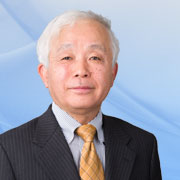
Date and time: From 11:00 - 11:30 a.m. on Dec. 12 (Thu.), 2013
Venue: JAXA Tokyo Office Presentation Room (B1 floor)
MC: Koji Terada, JAXA Public Affairs Department Director
The 20th Asia-Pacific Regional Space Agency Forum (APRSAF-20) was held in Hanoi, Vietnam, last week and I participated in the event. This year marks the forum's 20th anniversary, and an unprecedented large-scale conference was held with some 420 participants from 28 countries and eight international organizations.
The plenary session on Dec. 5 and 6 started with opening remarks by Prof. Chau Van Minh, president of the Vietnam Academy of Science and Technology (VAST,) (also a member of the Central Committee of the Communist Party of Vietnam), then the heads of space organizations in other countries presented their activity reports for the year.
Japan's presentation was in the form of a "country report." In addition, other international organizations gave some lectures including the Group on Earth Observations (GEO), the Committee on the Peaceful Uses of Outer Space (COPS), the Economic and Social Commission for Asia and the Pacific (ESCAP) and the International Astronautical Federation (IAF).
The major results of the APRSAF-20 were the following four items.
- The joint statement of the heads of space agencies in the Asia-Pacific region and heads of the past APRSAF sponsor/co-sponsor agencies was issued for the first time to confirm the expansion of space cooperation in the region in the future.
- A "New Cooperation Session" was held for the first time to seek a new cooperation direction that does not necessarily fit the framework of the existing working groups. At the session, new proposals* were made in light of social and economic issues that the Asia-Pacific region is facing. The proposals will be discussed and studied at the APRSAF executive committee to reflect on them at the next APRSAF.
* Some of the new proposals are: constructing an asteroid observation network in the Asia-Pacific region, a cooperative study of compact SAR satellite application, and holding an international conference for younger generations simultaneously with the APRSAF-21.
- We conducted promotional and enlightening activities for the application of the Japanese Experiment Module "Kibo" with the participation of a Japanese astronaut. One of the most impressive events was an achievement report on a protein crystal growth experiment jointly conducted with Malaysia.
- By taking this opportunity through APRSAF, we reviewed a cooperation agreement between JAXA and VAST to further expand possible cooperation fields with Vietnam.
The 21st APRSAF will be held in Japan next year.
I. Space science frontier
I. Space science frontier
(1) Manned space activity
- Small Satellite DeploymentThree small satellites including the Pico Dragon* were deployed by Astronaut Koichi Wakata's command operation from the Japanese Experiment Module "Kibo" at 9:17 p.m. on Nov. 19, 2013 (Japan Standard Time.) All project-related people in Vietnam, as well as ourselves were very pleased, and I felt that one of the important missions for Astronaut Wakata was completed.
*Pico Dragon is a micro-satellite that shoots images of the Earth. The project was selected through JAXA's public application system, and developed by the University of Tokyo, Vietnam National Satellite Center (VNSC), and IHI Aerospace Co., Ltd.
- MAXI (monitor of all-sky X-ray image) observes the largest Gamma burst
The monitor of the all-sky X-ray image (MAXI) on the Kibo's Exposed Facility observed the largest gamma ray burst in observation history, and made a significant scientific finding. The MAXI was developed by JAXA and RIKEN. This finding is thanks to the feature of the Kibo's Exposed Facility, which enables scientific observations utilizing the environment exposed to space, and the function of the MAXI, which can monitor X-ray planets in the sky.
The result of the above observation was published in the American magazine "Science" dated Nov. 22, 2013.
Another achievement of the MAXI is that it has found 11 new celestial bodies since it began observations. I highly evaluate the work as an important result capitalizing on the character of the Kibo's Exposed Facility and the strength of the MAXI.
- Astronaut Takuya Onishi's ISS expedition mission
Astronaut Takuya Onishi of JAXA was selected at a crewmember for the 48th /49th ISS expedition crew. He will stay at the ISS for about six months from June 2016. Prior to that, in 2015, Astronaut Kimiya Yui of JAXA will stay at the ISS for a long period, and, before that, in 2014, Astronaut Koichi Wakata, who currently is staying on the ISS, will serve as commander of the ISS, before returning to Earth. It means that a Japanese astronaut will reside on the ISS for three years in a row, which is a tremendous achievement.
The other day, I had an opportunity to communicate with Astronaut Wakata at the ISS. He was doing well and I was very pleased that he is actively engaging in his mission work there.
(2) Space science
- Status of HISAKIJAXA conducted spectroscopic observations of Jupiter and Venus using the Extreme Ultraviolet Spectroscope (EUV) aboard the Spectroscopic Planet Observatory for Recognition of Interaction of Atmosphere "HISAKI" (SPRINT-A) on Nov. 19. The SPRINT-A was launched by the first Epsilon Launch Vehicle on Sept. 14, 2013. As a result of observations, we were able to confirm that the EUV worked properly and can contribute to scientific observations.
With this confirmation, the HISAKI's initial on-orbit fictional verification was completed, and it moves on to the full-scale scientific observation phase.
The HISAKI will observe planets for a long period of time, thus we have high hopes for new findings.
Future schedule
- JFY 25 JAXA Technology Research Achievement Presentation
Theme: Aerospace and aviation technology contributing to social issue solutions
Date and time: on Dec. 18 (Wed.), 2013, from 10:00 a.m. to 4:45 p.m.
Venue: Sola City Hall on the 2nd fl. of Ochanomizu Sola City
Special lecturer: Ryoji Chubachi, President of the National Institute of Advanced industrial Science and Technology